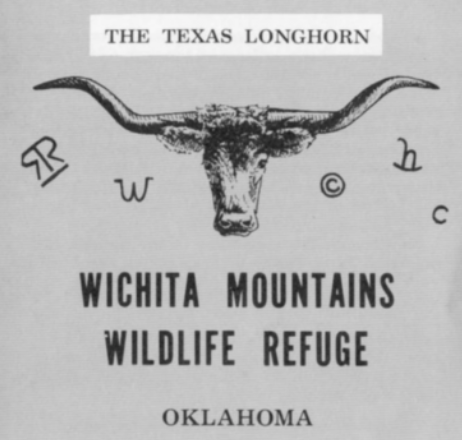
Historically, longhorn cattle in the Americas date back to 1521, when Gregorio de Villalobos was sent as viceroy to "New Spain" and brought a number of calves from Santo Domingo. Early explorers, including Coronado, brought cattle from Mexico into what is now Arizona, New Mexico, and Texas. These and other importations were the foundation stock of the longhorns of Texas and of the whole cattle industry in the Southwest.
The original cattle from Spain were coal black. As these cattle escaped from domestication, the evolved colors that came from their primitive European ancestors. Thus, the Texas longhorn today carries many colors and hide patterns. Hardy and active, they are well suited to the arid conditions of the Southwest, where for more than three centuries, they occupied extensive ranges. excluding other cattle, and left an indelible stamp on the economy and culture of the region.
"This lasting fight to subjugate the cranky, armored longhorn critters made heroes out of cowboys. The cowpuncher, for half a century or more, has enjoyed one of the most romantic reputations in the world. A tamer breed of cattle would never have given rise to the stock-hand's glory. A more domestic spirit than the usual cowpoke possessed could never have battled successfully with the longhorn, though. Just the telling of the cowboy's story, in song and story and art and movie, every year now, more than exceeds the sale value of the trail herds delivered from Texas to Montana in the best year the longhorn ever enjoyed. An estimated ten million longhorns were drained off the Texas ranges and driven up the north trails from 1866 to 1890. In the northern plains, they fattened on the fresh, deep grass left by the vanishing buffalo and other big game."
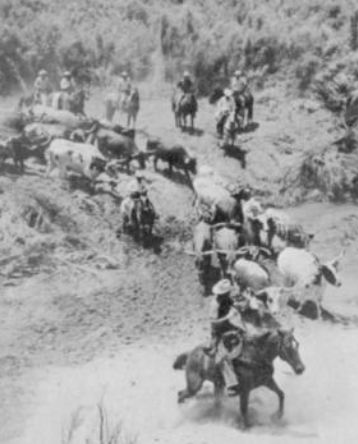
(The Longhorn of the Wichitas, 1947.)
Shorthorn and Hereford stock were introduced into the Southwest to improve the beef qualities, and Brahma cattle to produce animals more resistant to the Texas fever tick. The true longhorn began to disappear, and by 1920, it became apparent that only prompt action could save them from extinction. Through a special Congressional appropriation, funds were made available for an intensive effort to save them. Forest Service employees Will C. Barns and John H. Hatton, armed with descriptions of the longhorn "type, set forth on a 5,000-mile search for typical animals. After inspecting more than 30,000 head of Texas cattle, a herd of 20 COWS, 3 bulls, 3 steers, and 4 calves was assembled, and in August 1927, was shipped to the
Wichita Mountains Wildlife Refuge (then the Wichita National Forest and Game Preserve).
It was the purpose of the Forest Service, continued by the Bureau of Sport Fisheries and Wildlife, to secure animals possessing the typical longhorn traits and develop the herd to represent the original longhorns as nearly as possible. Many animals have been culled through the years and a few additions have been made, most of which came from remote portions of Mexico. In recent years, culling has been a difficult choice since all are considered good longhorns, and keeping a balance of colors in the herd takes high priority in herd reductions.The Texas longhorn has been pictured as a lean, big-boned animal, inclined to be long on horn and short on beef. Given a favorable grazing range and an opportunity to get all it wants to eat, a longhorn tends to lose that lean and hungry look. In 1935, three 4- and 5-year-old bulls brought from Mexico had a combined weight of 1535 pounds. A year later just one of these bulls weighed 1 140 pounds. Some of the Wichita steers exceed 2000 pounds. Differences of opinion prevail as to just what constitutes a longhorn. The following type characteristics were gathered by Forest Service officials from ranchmen, trail riders, historical accounts, and other sources of information and were used as guidelines in
making the original and subsequent selections.
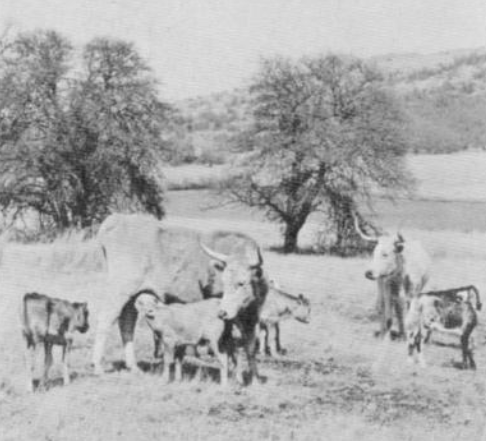
BODY
Cows and Steers
Fairly large-boned and rangy, short coupled. Average weight for cows 650 to 750 pounds and up to 800 pounds, steers at 4 to 5 years should weigh 1000 to 1200 pounds when fat. Fairly smooth in conformation but narrow and 'slab sided." Long legs with forelegs seemingly shorter than usual, due, doubtlessly to heavy forequarters with somewhat arched shoulders merging to the hollow of the neck and loin, particularly in aged steers, sway-backed with sloping hips and bony, fish-shaped prominence along the top of the rump just back of the line across the hip bones. Not a good beef animal. Eyes wide apart, appearing more so on account of length of face. Sometimes with coarse hairs about the head and ears. Head unusually large, often with wide, hairy crown between the bases of the horns compared with present-day cattle, face long, neck short and stocky.
BULLS
Characteristics of bulls are similar to those of cows and steers except: Horns are short and resemble those of the buffalo bull though not as erect. Rather long dewlaps; black points; inclined to be mean in disposition; hair tends to be coarse and thick.
COLORS
They may be any color, speckled, roan, pied, brindle, etc., with fawn colors or yellows and light reds in conspicuous proportions. Too many reds or whites in the herd would not be advisable. Where there is a choice, those with black points, such as muzzle, around the eyes, front of forelegs, and the tail switch, should be retained. A 'line-back" animal should not be turned down for there were many in the old herds. These were mostly red, black, or brown with a white line down the backbone.
Some are brown with a lighter brown streak down the back.
HORNS
Steers not over 12" in circumference at hair line when 6 years and over; cows' horns are much smaller; they should grow horizontally with slight twist rather than up, although both forms are acceptable; tips of steer horns are often black; a 6-year old steer with horns five feet tip-to-tip will be a good animal; horns over seven feet are rare; over eight-feet horns are extremely scarce; white horns are more attractive.
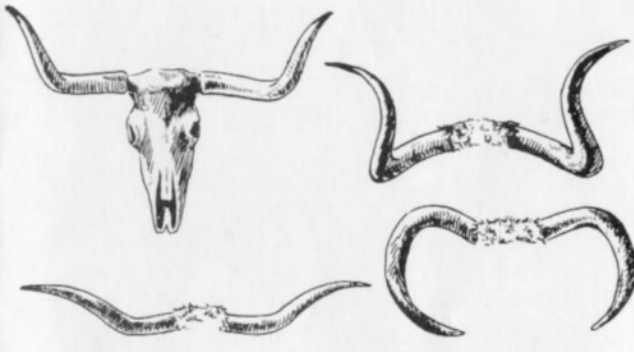
In 1964, a group of Texas longhorn owners organized the Texas Longhorn Breeders Association of America. The breed is now established with more than 3000 animals registered. Annual sales to keep the herd within the carrying capacity of the range are held on the Wichita Refuge. All of the Wichita Refuge's breeding animals are registered with the association.
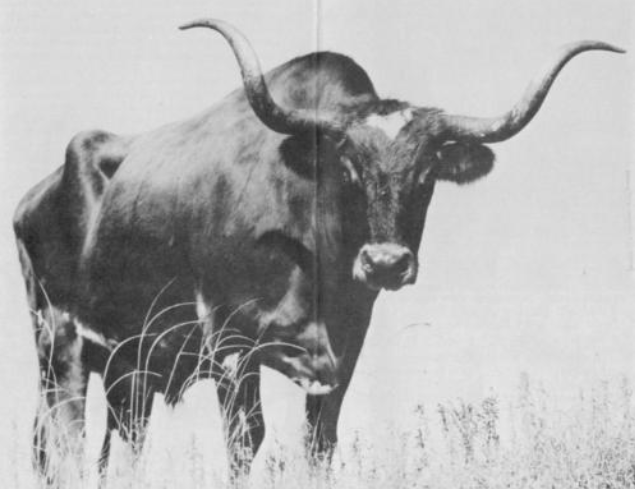
The Wichita Mountains Wildlife Refuge is one of more than 3O0 refuges in the National Wildlife Refuge System administered by the Bureau of Sport Fisheries and Wildlife in the Department of the Interior.
Objectives of National Wildlife Refuges revolves around the central theme of preserving representative segments of our nation's habitat heritage and the wildlife that belongs in them, for the study and enjoyment of present and future generations of Americans.
